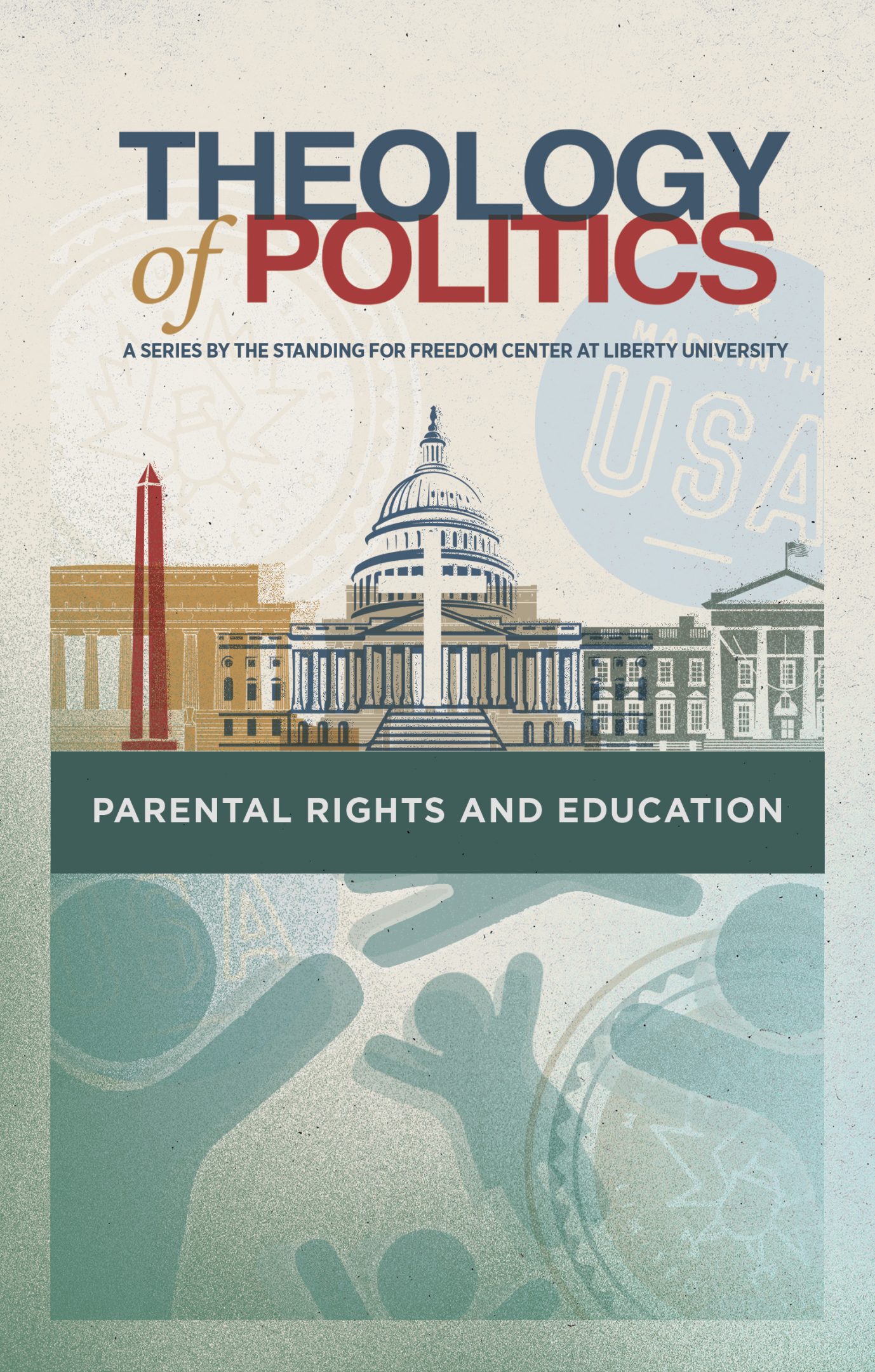


Get a free copy of Parental Rights & Education when you subscribe to our newsletter!

In the case of Buck v. Bell, eight justices validated the practice of eugenics — a horrific “science” that swept 20th century America, was embraced by the Nazis, and continues today, cloaked as “healthcare.”
On May 2, 1927, the Supreme Court of the United States released an 8-1 ruling declaring that Virginia, “for the protection and health of the state,” had a constitutional right to sterilize mentally disabled individuals without consent.
So what precipitated this decision, and why is this important today?
Most Supreme Court decisions are accepted as judicious, but the Buck v. Bell ruling, like those in Dred Scott v. Sandford, Plessy v. Ferguson, and Roe v. Wade, was anything but sensible. In fact, it gave credence to the burgeoning eugenics movement that was sweeping through the U.S. and would soon jump the Atlantic and land in Nazi Germany.
Writing for the High Court, Justice Oliver Wendell Holmes Jr., stated,
“It is better for all the world, if instead of waiting to execute degenerate offspring for crime, or to let them starve for their imbecility, society can prevent those who are manifestly unfit from continuing their kind…Three generations of imbeciles is enough.”
The three generations Chief Justice Holmes was referring to were Carrie Buck, Carrie’s mother and her grandmother. Carrie Buck was just 18 years old when she was labeled promiscuous and incorrigible for being pregnant out of wedlock and admitted to the Lynchburg Colony for Epileptics and Feebleminded. She had been placed there to protect her foster family from public embarrassment after their visiting nephew had raped her. Carrie later gave birth to a daughter, Vivian.
On October 19, 1927, less than six months after the Supreme Court ruling, Carrie was sterilized. Her child had already been removed from her care because Carrie had been labeled an unfit parent.
Over the course of several decades, as many as 70,000 individuals in 31 states would be forcibly sterilized, many never knowing why they were unable to have children, as they had been deceptively told they needed an “appendectomy” or some other procedure.
The term “eugenics,” from the Greek meaning “good birth,” had been coined in 1883 by England’s Francis Galton, a cousin of Charles Darwin. Galton was convinced that his cousin’s theory about natural selection, or the survival of the fittest, was equally valid in people as in other “stock.” He especially believed in “race science,” the idea that intelligence and other characteristics were directly associated with genetics. Galton justified the need to reduce the ranks of the socially and intellectually inferior by pointing out their negative attributes, such as poverty, incorrigibility, sickness, and mental and physical disabilities.
To achieve this, Dalton and other prominent eugenicists argued that these less desirable people — known generally as “feebleminded,” no matter their actual intelligence — needed to be discouraged or somehow restricted from procreating.
Previous to Darwin and Galton, prominent Americans had discussed their observations regarding notable differences between the races. The University of Virginia, founded by Thomas Jefferson, became a leading proponent of eugenics, as even Jefferson believed there were intrinsic differences between races.
“I advance it therefore as a suspicion only, that the blacks, whether originally a distinct race, or made distinct by time and circumstance, are inferior to the whites in the endowments both of body and mind,” Jefferson once stated. He also pondered, “The circumstance of superior beauty, is thought worth attention in the propagation of our horses, dogs, and other domestic animals; why not in that of man?”
Eugenics also emanated from a belief in the moral and physical differences in the classes, chalking up their social and financial success to “good breeding”; for example, the Boston Brahmins, a group of elite White Anglo-Saxon Protestants (WASPs), believed that certain families in Massachusetts needed to marry within their own kind, attend the same schools, and graduate from Harvard or another Ivy League school. Pedigree determined value and worth was based on family name.
Thus, the belief system was not relegated to a political party but to class status as defined by lineage. Republican Theodore Roosevelt, hailing from a prominent New York family, stated, “I wish very much that the wrong people could be prevented entirely from breeding…Feeble-minded persons [should be] forbidden to leave offspring behind them.”
Business leaders (including Andrew Carnegie, John D. Rockefeller, and Clarence Gamble), government officials, and prominent scientists, academics, and medical doctors soon joined the ranks of those embracing eugenics and Darwin’s survival of the fittest mentality.
In this era, racism not only involved segregation but also superiority and the elimination of “undesirables.” It’s hardly a surprise then that eugenics would ultimately be taken to its extremes in Nazi Germany, starting in 1933, where the belief system involved not just forcible sterilization but also forced abortion, medical experimentation, and mass extermination.
Darwin had opened the floodgate of racial and genetic engineering with his 1859 book On the Origin of Species by Means of Natural Selection or the Preservation of Favored Races in the Struggle for Life. Within 70 years of the book’s release, Carrie Buck would be sterilized.
While the vast number of American sterilizations occurred before 1944, some states continued to sterilize those with mental and physical disabilities after World War II.
The American eugenics movement was largely discredited during the Nuremburg trials for war criminals in 1945-46. Among others, the lawyer for Nazi physician Karl Brandt cited the Buck v. Bell decision to defend his client’s record of forcibly sterilizing thousands of Jews, insisting that Brandt’s actions were no different than the government-mandated practice of eugenics in America.
Nonetheless, Virginia’s forced sterilization law remained on the books until 1974. In 2002, the state officially apologized for the sterilizations and in 2015 offered financial compensation to those affected. Few victims, however, were still alive to accept the money, and they had no descendants to collect it since their family line had been eradicated.

While “inferior” whites and immigrants from eastern and southern Europe were forcibly sterilized, so too were blacks. As eugenics waned in the 1940s, another option for eliminating “undesirables” and “human weeds” became prominent and acceptable — birth control and abortion. In fact, Planned Parenthood hails directly from the eugenics movement, and abortion would soon become eugenics on steroids, although the practice was couched in much more euphemistic language like “reproductive freedom” and “healthcare” and manipulated women into believing that killing their offspring was in their own best self-interest.
From early on, the majority of abortion mills have operated in communities where minority cultures are the majority of recipients of such “healthcare” services. Margaret Sanger believed that eugenics, in the form of birth control and abortion, was a way to “create a race of thorough-breds” and declared that the better, more productive classes “are paying for and even submitting to the dictates of an ever increasing unceasingly spawning class of human beings who never should have been born at all.”
In a letter to Dr. Clarence Gamble, the heir to the Procter and Gamble soap fortune and a leading eugenicist, Sanger emphasized her plan for how to carry out the “Negro Project of the South.” She wrote,
“We should hire three or four colored ministers, preferably with social-service backgrounds, and with engaging personalities. The most successful educational approach to the Negro is through a religious appeal…. We do not want word to go out that we want to exterminate the Negro population and the minister is the man who can straighten out that idea if it ever occurs to any of their more rebellious members.”
And is there any difference today to what is considered the horror of Buck v. Bell and the effort to “change” girls and boys into the opposite sex through drugs and surgery? Allowing children to take puberty blockers and hormonal therapy causes sterilization. Surgery that removes genitals and reproductive organs has the same sterilizing outcome as those surgeries to sever fallopian or vas deferens tubes that took place in the 1920s and 1930s.
Carrie Buck died at the age of 76. Her remaining years in a nursing home were spent reading the newspaper and completing crossword puzzles. Was Carrie Buck feebleminded? Not according to those who knew her best. After her sterilization, she was released from the institution and would go on to marry twice (her first husband died) and work as domestic help. Her greatest regret was that she could not have more children.
Carrie’s reflections of her traumatic life, however, are valuable for each of us today and reflect the Christian principle of forgiving those who harm us. “It just don’t do no good to hold grudges,” she once said. Carrie was buried in the same cemetery as her daughter, Vivian, who she never knew. Removed from Carrie’s care as an infant, Vivian is said to have had normal to above average intelligence but died when she was just eight years old.
History doesn’t always repeat but it often rhymes. The song is true that all the children of the world are precious in Jesus’ sight, both in the past and today. Stand with the Standing for Freedom Center as we continue to explore history and shine a light on our Christian responsibility to speak biblical truth about contemporary cultural and political issues.
If you like this article and other content that helps you apply a biblical worldview to today’s politics and culture, consider making a donation here.
Christian conservative news and issues that matter. Curated just for you!
